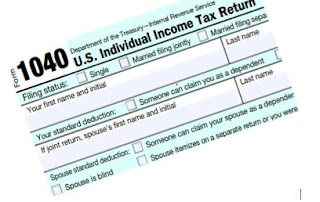Anyone applying for immigration benefits should take heed -- there is a new format for tax transcripts. Tax transcripts are a vital document to many immigration applications, such as N-400 Application for Naturalization, I-485 Application to Register Permanent Residence or Adjust Status (green card), I-864 Affidavit of Support, and more. The IRS has introduced a new tax transcript format aimed at protecting sensitive information. The changes will affect who can obtain a transcript and what information is shown.
Sensitive personal information has been partially redacted on transcripts. Only the last four digits of SSN, EIN, and account or telephone numbers will be shown. Similarly, only the first four characters of last names and business names will be shown. The first six characters of a street address will be shown. Otherwise, all money amounts will still be visible.
Also, access to tax transcripts has been restricted. From February 4, 2019 onward, the IRS will stop faxing transcripts to taxpayers, tax professionals, and 3rd parties. Individual taxpayers can get a masked transcript (as described above) online https://www.irs.gov/individuals/get-transcript, or through U.S. postal mail, and can request unmasked ones for doing taxes.
Sensitive personal information has been partially redacted on transcripts. Only the last four digits of SSN, EIN, and account or telephone numbers will be shown. Similarly, only the first four characters of last names and business names will be shown. The first six characters of a street address will be shown. Otherwise, all money amounts will still be visible.
Also, access to tax transcripts has been restricted. From February 4, 2019 onward, the IRS will stop faxing transcripts to taxpayers, tax professionals, and 3rd parties. Individual taxpayers can get a masked transcript (as described above) online https://www.irs.gov/individuals/get-transcript, or through U.S. postal mail, and can request unmasked ones for doing taxes.
Remember, you must use the address information in the tax return when making requests for your transcripts. If the addresses do not match, the system will reject your request. For the purposes of completing USCIS immigration forms (e.g., I-864), tax payments must request for RETURN transcripts.
With the above information blocked, how can transcripts and their taxpayers be identified? The IRS has introduced the Customer File Number, an optional 10-digit number for tax transcripts to be matched to their taxpayers. Third parties can create the code and have the taxpayer sign for it, then submit it through Form-4506T Request for Transcript of Tax Return. The taxpayer can also submit the form himself. The number will then mark all future copies of the transcript. This way, a transcript can be matched to its taxpayer even with censored personal information. Taxpayers can use this method to verify income for a lender (e.g., in mortgage applications). The 10-digit number can function as a lender's "loan number" on a transcript request. The loan number will be matched to the taxpayer, and no SSN is needed.
The Customer File Number is also available to authorized tax professionals through the Transcript Delivery System (TDS). The professional can assign 10-digit codes to show on transcripts produced by the TDS. This is a useful way for them to keep track of transcripts.
Tax professionals will still be able to access transcripts for tax preparation purposes. They can request unmasked transcripts, which will be mailed to the taxpayer's address. However, a more complicated process must be undergone to request unmasked Wage and Income transcripts. Starting January 7, 2019, tax professionals may contact the Practitioner Priority Service Line to access these unmasked transcripts for tax preparation. Accessing these unmasked transcripts will require an e-Services account with Secure Access authentication.
With the above information blocked, how can transcripts and their taxpayers be identified? The IRS has introduced the Customer File Number, an optional 10-digit number for tax transcripts to be matched to their taxpayers. Third parties can create the code and have the taxpayer sign for it, then submit it through Form-4506T Request for Transcript of Tax Return. The taxpayer can also submit the form himself. The number will then mark all future copies of the transcript. This way, a transcript can be matched to its taxpayer even with censored personal information. Taxpayers can use this method to verify income for a lender (e.g., in mortgage applications). The 10-digit number can function as a lender's "loan number" on a transcript request. The loan number will be matched to the taxpayer, and no SSN is needed.
The Customer File Number is also available to authorized tax professionals through the Transcript Delivery System (TDS). The professional can assign 10-digit codes to show on transcripts produced by the TDS. This is a useful way for them to keep track of transcripts.
Tax professionals will still be able to access transcripts for tax preparation purposes. They can request unmasked transcripts, which will be mailed to the taxpayer's address. However, a more complicated process must be undergone to request unmasked Wage and Income transcripts. Starting January 7, 2019, tax professionals may contact the Practitioner Priority Service Line to access these unmasked transcripts for tax preparation. Accessing these unmasked transcripts will require an e-Services account with Secure Access authentication.

No comments:
Post a Comment